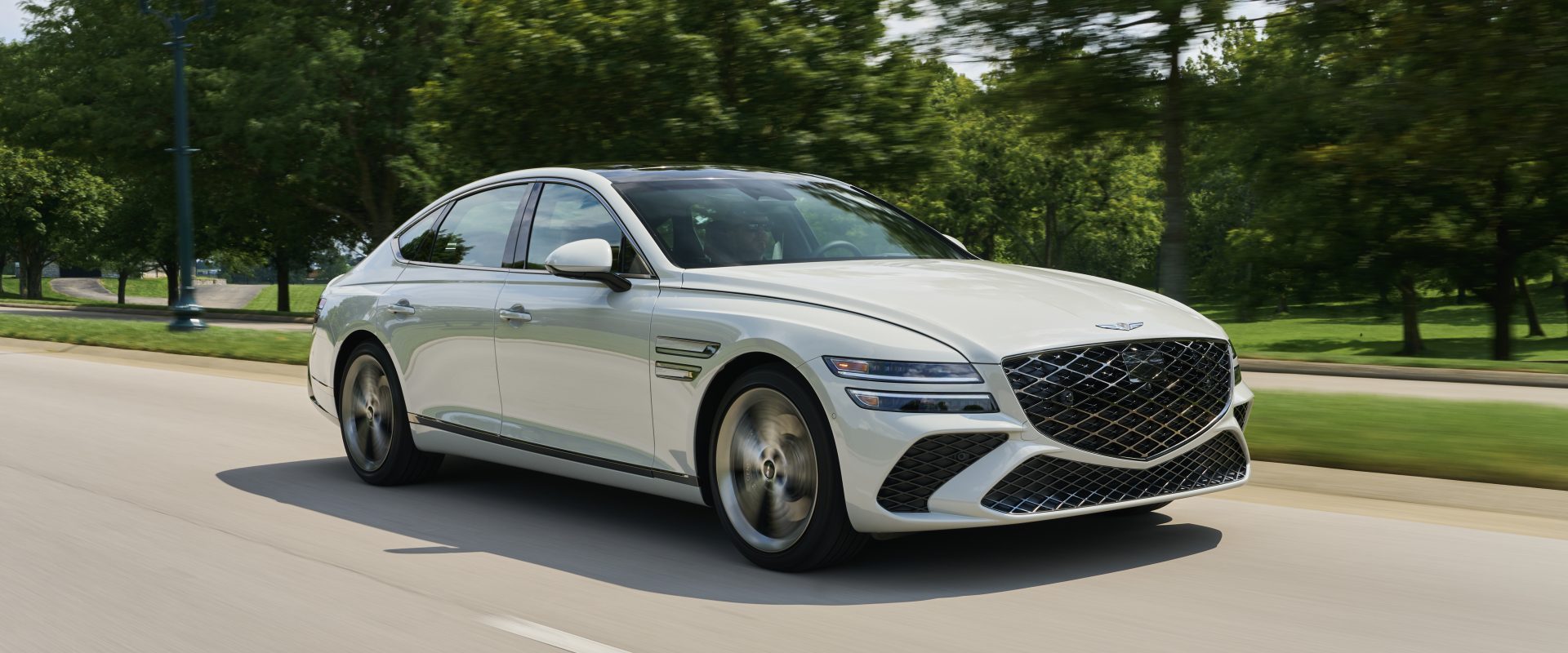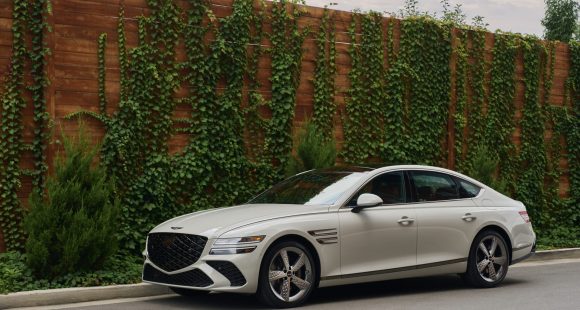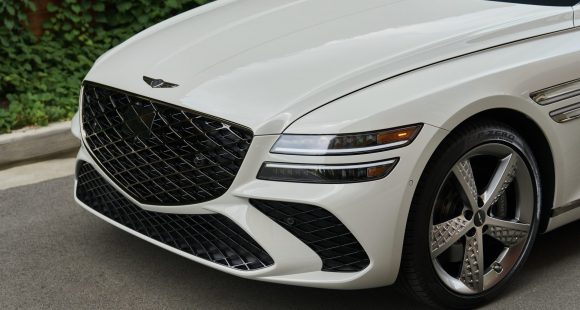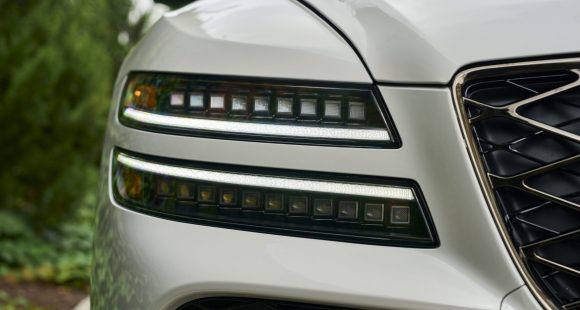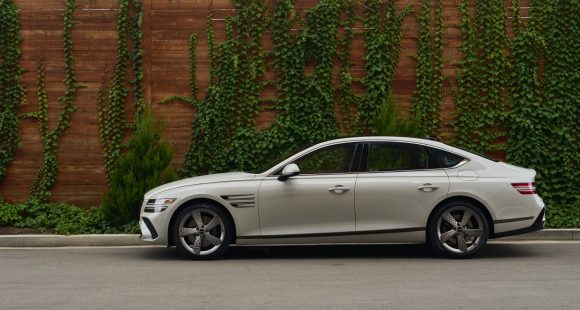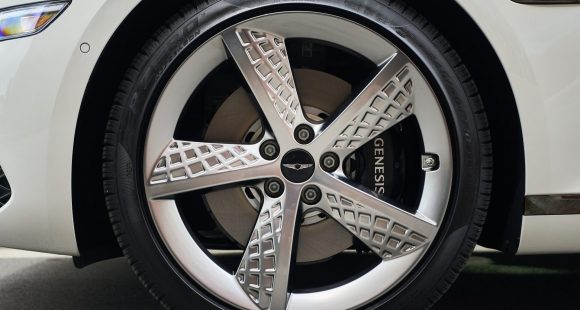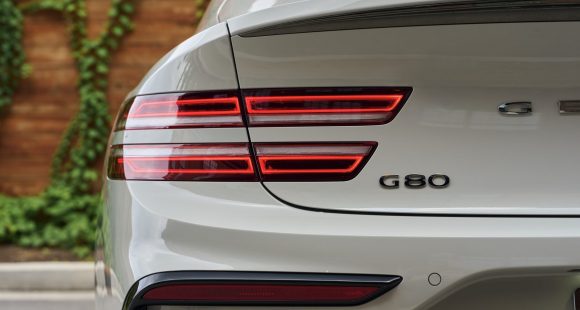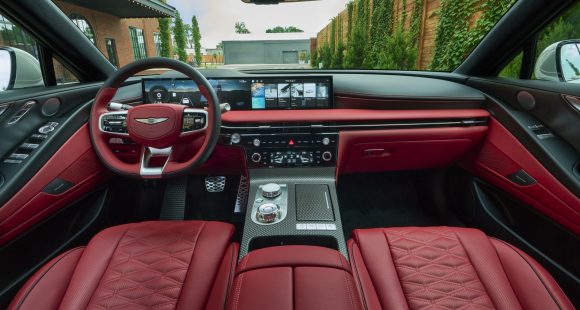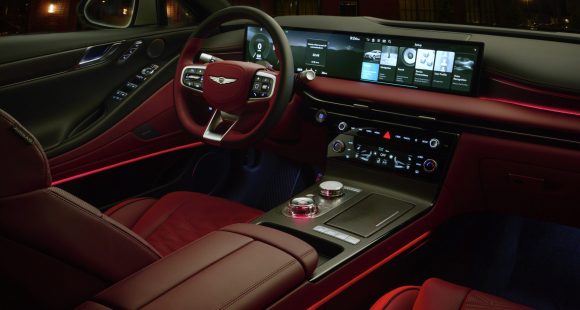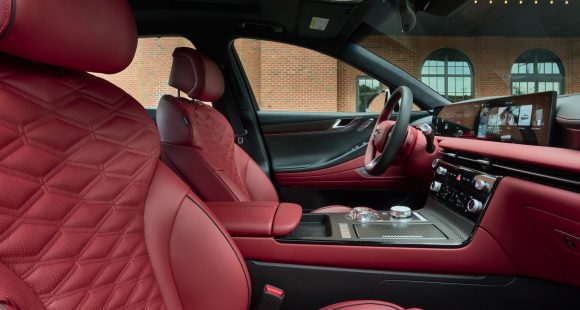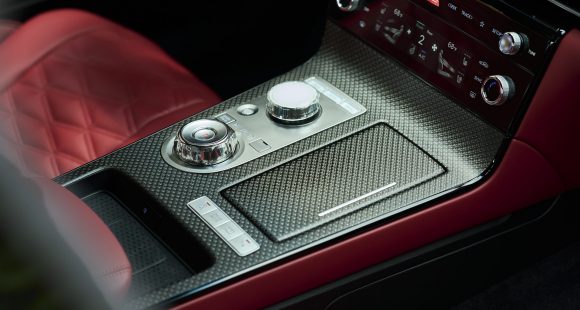2011 Kia Sorento
It’s a clear sign of the times. Kia, responding to current market tastes, has redesigned their compact Sorento without its original body-on-frame SUV chassis, opting instead for a crossover utility unibody. Now Kia hopes this move will greatly expand the Sorento’s appeal. But does being more like a car, and less like a truck, make for a better Sorento?
Besides its chassis transformation, the second generation 2011 Kia Sorento is also the Korean brand’s first vehicle to have its assembly transferred to American soil. That takes place at a huge new facility in West Point, Georgia.
Still, Sorento enters an already crowded compact CUV segment, and faces stiff competition from other quality entrants like the Toyota RAV4, Nissan Rogue, and also new Chevrolet Equinox. Like the Equinox, the Sorento is called a compact, but it’s nearly mid-size both outside and inside. Using a chassis shared with the Hyundai Santa Fe, Sorento’s length of 183.9 inches is over three inches longer than before, if slightly lower for better aerodynamics.
The totally refashioned exterior echoes Kia’s new, bolder, front-end theme begun with the Forte. The grill and flared-back headlights form a continuous arch that is most appealing.
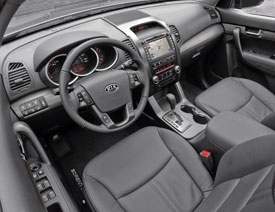 Based on the KND-4 concept from the 2007 Los Angeles Auto Show, the production Sorento has a similar sweeping profile and athletic stance. Roof rails are optional. The rounded rear-end also exudes lots of presence, with large LED taillights that extend into the liftgate. Wheels are 17 and 18-inch alloys, with a mirror finish optional on top EX trim.
Based on the KND-4 concept from the 2007 Los Angeles Auto Show, the production Sorento has a similar sweeping profile and athletic stance. Roof rails are optional. The rounded rear-end also exudes lots of presence, with large LED taillights that extend into the liftgate. Wheels are 17 and 18-inch alloys, with a mirror finish optional on top EX trim.
While the original Sorento offered a pair of V6s, the 2011 allows a more varied choice. Standard is a 2.4-liter inline-4 shared with the Forte SX. Output is 175 horsepower and 169 pound-feet of torque.
Optional is an all-new 3.5-liter V6 with a best-in-class 276 horsepower and 248 pound-feet of torque. But even with it, trailer towing takes a beating: 3,500 pounds, down from 5,000 last year.
A six speed manual is standard with the I-4. Kia’s first home-grown six-speed automatic is an option, and standard with the V-6. A single speed four-wheel drive system with locking center differential can be fitted to either engine. And, even with front drive, useful Hill Start Assist and Downhill Brake Assist are included.
Government Fuel Economy Ratings for our front-drive four-cylinder automatic are good at 21 city/29 highway on regular gas. We saw a respectable 24.3 miles per gallon in real world driving. But, you do pay for that efficiency on the track. Our I-4 Sorento huffed from 0 to 60 in a long 10.1 seconds. And the quarter mile dragged out to 17.7 seconds at 78 miles per hour. The Sorento felt breathless all the way down the track. Shifts were lazy and power-robbing.
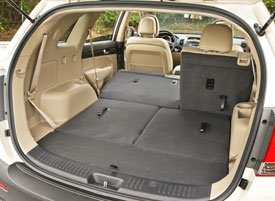 The Sorento’s new unibody employs a MacPherson strut front, and multilink rear suspensions. Electronic Stability Control is standard.
The Sorento’s new unibody employs a MacPherson strut front, and multilink rear suspensions. Electronic Stability Control is standard.
Unfortunately, none of this helped inspire a high level of confidence in our handling tests. Steering was quick enough but with little feedback, and body roll was excessive.
The one bright spot in Sorento’s track performance was braking. The all-disc, ABS brakes delivered arrow-straight, near fade-free stops of a short 120 feet on average from 60 to 0. The pedal was firm with positive feedback.
On normal roads, the Sorento is a lot more self-assured. It’s comfortable and quiet, feeling well anchored at even elevated interstate speeds.
That comfort continues inside, where Kia used the extra body length for more cabin space and versatility. With both five- and first time three-row seven-passenger models, it’s now a big family-mover. The modern, tech-inspired dash is defined by overlapping gauges and practical controls. Our EX model’s well-padded seats came with standard eight-way power for the driver, and optional heat.
Standards include a tilt/telescoping wheel with audio and Bluetooth controls. Satellite Radio and a USB port are on board too. A 550-watt Infinity upgrade, navigation, and even a dual sunroof, are available. Our EX added push button start, and a backup camera with rear view mirror display.
Those in the 60/40 second row will find it quite roomy, with a welcomed increase in legroom. Kids will like the 50/50 split folding third row, but not adults. Behind the third row is 9.1 cubic feet of space that expands to 37 cubic feet when folded, and an excellent 72.5 with all seats down. A reversible load floor and handy underfloor compartment add to this CUV’s overall practicality.
And that practicality also speaks to Kia’s value pricing. In fact, the base price for the 2011 Sorento is down from last year starting at $20,790. Sorento base prices top out at $29,690.
Combine that with Kia’s vastly improved quality reputation, and one of the best warranties going, and it’s no wonder they continue to chalk up sales gains. The new Sorento’s track performance may be lacking, but we have no qualms with its packaging. So, the 2011 Kia Sorento is indeed a better answer to what today’s family buyers want. And, yes, it’s a better Sorento, too.
Specifications
- Engine: 2.4-Liter Inline-4
- Horsepower: 175
- Torque: 169 Lb Feet
- 0-60 MPH: 10.1 Seconds
- 1/4 Mile: 17.7 Seconds @ 78 MPH
- 60-0 MPH: 120 Feet
- EPA: 21 MPG City/ 29 MPG Highway
- Mixed Loop: 24.3 MPG
2025 Genesis G80
New Interior And New Tech Elevates G80 Sedan
Talk about bad timing. This second-generation G80 debuted at the height of a global pandemic. But that hasn’t stopped Genesis or this Bentley-on-a-budget sedan. In fact, since then, Genesis has unveiled a spectacular all-electric version and now given all G80s a makeover. So, let’s find out what a better and better-timed new G80 is ready to deliver.
Breaking into the luxury sedan scene requires going up against traditional brands with long pedigrees and legions of loyal buyers. But Hyundai has never shied away from a challenge, and has made steady progress with their Genesis brand, and hopes that a revised 2025 G80 midsize sedan will be their next step up.
Styling matters more when you’re the upstart, and the Genesis Athletic Elegance theme changes very little for ’25; just a new grille, slightly reshaped bumpers, new wheels ranging from 18 to 20 inches, and an updated color palette. The G80’s unique two-line LED headlamps get revised Micro Lens Array technology that boosts performance while minimizing the brightness for oncoming drivers.
Changes inside are much more significant with an entirely new dash and console, eliminating both the hooded gauge panel and dashtop wide info screen. Merging them together into one 27-inch wide LG panoramic display than runs from behind the steering wheel to over the center stack. There’s a bigger and more comprehensive control panel in the center stack; while the console gets less armrest coverage, more space for storage, and reshaped cupholders. The wider display is still a touchscreen, but there is also a console mounted controller if you prefer to keep it fingerprint free. Both options work well, but the controller is still too easy to confuse with the dial-like shifter.
Materials are on par if not a notch above most European luxury rivals, and there are 18 speakers to crank out 1,400 watts of premium sound from Bang & Olufsen. Top Sport Prestige trim comes with Nappa leather seats, carbon fiber trim, micro-suede materials for the headliner and pillar covers, heated armrests, head-up display, and upgraded active safety features. Front seats are immensely comfortable without feeling overly soft, and there’s plenty of comfort and room for adults in the back seat.
More Bentley than Benz; streaking down the track with European-style solidity that gives you very little indication of the high speed you’re traveling at.
Same powertrains as last year. Base power comes from a 300-horsepower 2.5-liter turbo-four; the upgrade is this 3.5-liter twin-turbo V6 that outputs 375 horsepower and 391 lb-ft of torque. Both are hitched to standard all-wheel drive. At our Mason Dixon Dragway test track, the AWD delivered enough grip for consistent slip-free launches. We hit 60 in 5.0 seconds flat. Run after run, the 3.5T pulled as strong as it sounds. All G80s work with the same paddle-shift eight-speed automatic transmission, and while shifting was silky smooth on the street, here on the track with Sport Mode and wide-open throttle they were noticeably firmer and quicker.
It was a very surreal experience in the cabin. More Bentley than Benz; streaking down the track with European-style solidity that gives you very little indication of the high speed you’re traveling at. For us, that was 105 mph in 13.4 seconds at the quarter. In addition to the G80’s Sport Mode that tightens steering, improves throttle response, adjusts shifting points, firms up the suspension, and reconfigures stability system parameters; Sport Prestige trim adds rear-wheel steering and an electronic limited slip differential. But, even with all of that, it didn’t feel overly sporty in our handling course. Now, we were able to comfortably carry quite a bit of speed through the cones, but there was just an overall soft, somewhat disconnected and heavy presence that had us unsure of how hard we could push. Sport Prestige also adds upgraded performance brakes. They were plenty capable, bringing this 4,600-lbs. luxury liner consistently down from 60 in just 104 feet with little fade.
Government Fuel Economy Ratings for the six-cylinder are 16 City, 24 Highway, and 19 Combined. We averaged a good 21.3 mpg of Premium. Still, that’s a slightly below average Energy Impact Score, using 15.7 barrels of oil annually with 7.8 tons of CO2 emissions.
Considering the amount of luxury packed into the G80, its $58,350 starting price, even though slightly higher than last year, remains pretty remarkable. It’s a substantial step up to the 3.5T though, as it begins at $70,850.
Genesis has existed as a standalone luxury brand for just less than a decade, and it has indeed been making steady progress into what is surely the hardest segment of all to master. The 2025 Genesis G80 sedan continues to impress and is a great option for luxury-minded buyers who prioritize true value over badges.
Specifications
As Tested
- Engine: 3.5-liter twin-turbo V6
- Transmission: eight-speed automatic
- Horsepower: 375
- Torque: 391 lb-ft
- EPA: 16 City | 24 Highway | 19 Combined
- 0-60 mph: 5.0 seconds
- 1/4 Mile: 13.4 seconds at 105 mph
- Braking, 60-0 (avg.): 104 feet
- MW Fuel Economy: 21.3 mpg (Premium)







